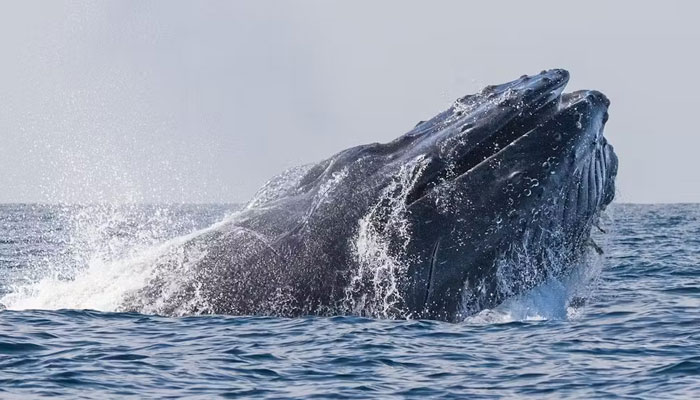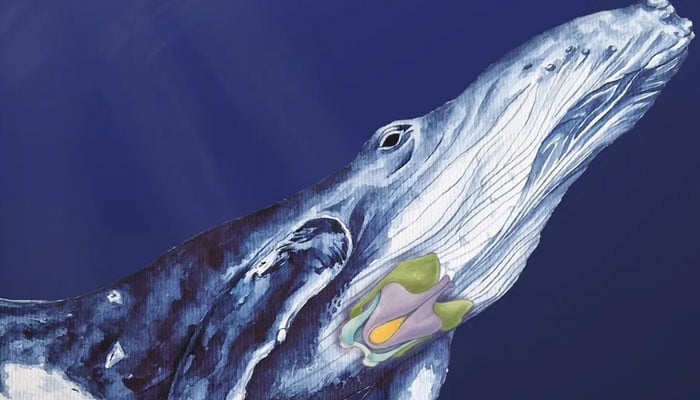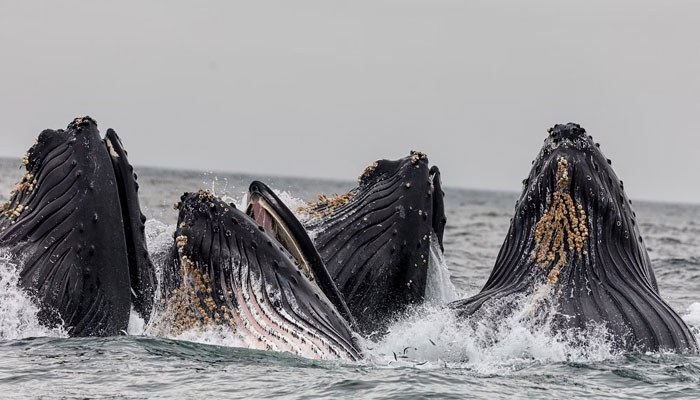Scientists finally crack long-standing mystery behind haunting whale songs
Baleen whales comprise 14 species including blue, humpback, right, minke, and gray whales
February 22, 2024

The haunting songs sung by whales have always intrigued people making them curious about how these sounds are produced. This has remained a mystery until now.
Scientists have discovered that whales, including baleen whales, have developed a unique "voice box" that allows them to sing underwater, resulting in haunting and complex songs, the BBC reported.
The discovery, published in Nature, also explains why ocean noise is disruptive for these giants.
Researchers created computer models of baleen whale songs, revealing that their song is limited to a specific frequency, which coincides with shipping vessel noise.
"Sound is absolutely crucial for their survival because it's the only way they can find each other to mate in the ocean," explained Professor Coen Elemans, of the University of Southern Denmark, who led the study.
"[These are some] of the most enigmatic animals that ever lived on the planet," he told the BBC. "They are amongst the biggest animals, they're smart and they're highly social."

Baleen whales, comprising 14 species like blue, humpback, right, minke, and gray whales, use baleen plates instead of teeth to sieve large mouthfuls of tiny creatures from the water.
"They cannot simply choose to, for example, sing higher to avoid the noise we make in the ocean," explained Elemans.
Elemans' study reveals that ocean noise can hinder whale communication, potentially aiding in the conservation of endangered species like humpbacks and blue whales.
The research also addresses long-standing questions about eerie whale songs, which sailors once believed were associated with ghosts or mythical sea creatures.

The research provides an evolutionary perspective of how whales' ancestors returned to the oceans and their underwater communication adaptations.
It focuses on toothed whales, which include dolphins, orcas, sperm whales, and porpoises, which produce sound through a unique nasal passage structure. Studying these animals is easier due to their easier study.









